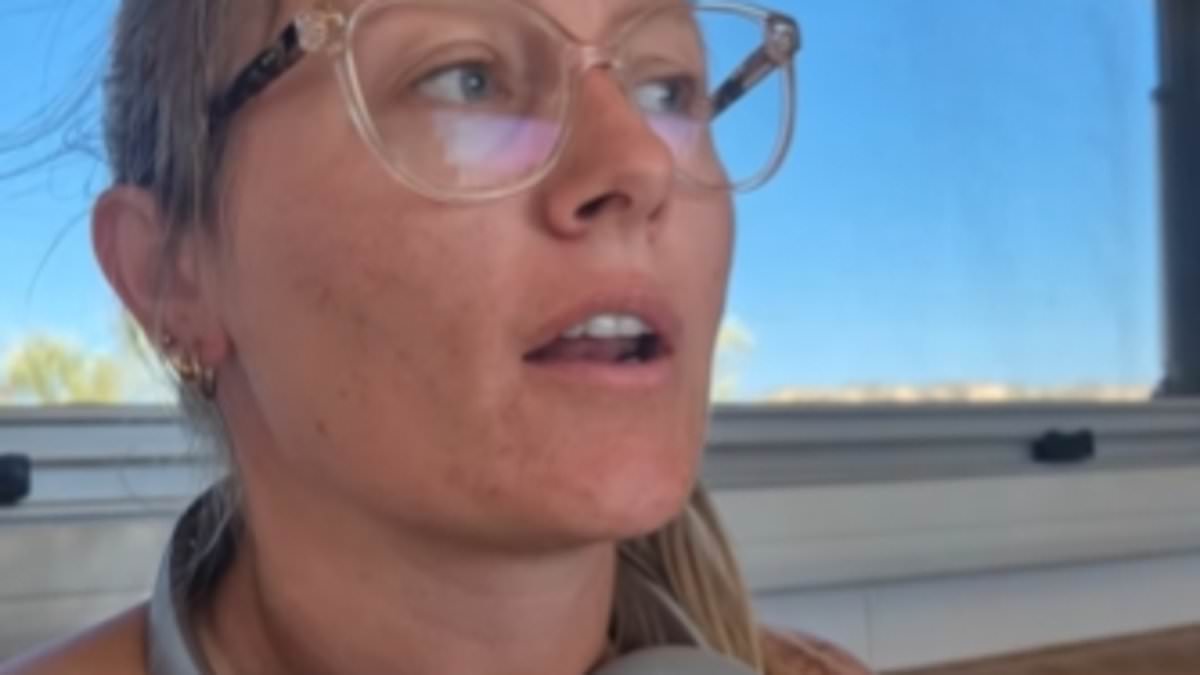An n couple have revealed they were ordered to delete their Uluru travel videos and Instagram posts, three months after their outback adventure.
Britt Cromie and her husband Tim, who document their travels online, told followers they had no idea strict media guidelines apply at Uluru and Kata Tjuta, even for tourists sharing photos to personal accounts.
In a candid Instagram video, Britt said they were blindsided by a lengthy email outlining 20 possible offences linked to their YouTube upload and Instagram posts.
‘You have to apply for a permit, whether you’re a content creator, doing brand deals, or just posting personal socials,’ she explained.
‘We weren’t aware about that.’
Anyone wanting to shoot content at Uluru–Kata Tjuta National Park needs to pay for a photo permit, which costs $20 a day for commercial photography or $250 a day for filming.
On top of that, all visitors are required to buy a park entry pass, priced at $38 per adult for a three-day visit.
The couple applied for the permit after their trip, only to be told months later that large sections of their content breached the rules, despite already cutting footage of sacred sites.
According to Parks , many parts of Uluru and Kata Tjuta are culturally sensitive.
‘Uluṟu and Kata Tjuṯa have a number of culturally sensitive sites,’ the Uluru website states.
‘The rock details and features at these sites are equivalent to sacred scripture for Aṉangu. They describe culturally important information and should only be viewed in their original location and by specific people.’
‘It is inappropriate for images of sensitive sites to be viewed elsewhere, so taking any photos of these places is prohibited.’
Climbing Uluru has been permanently off-limits since October 2019, after the Uluru–Kata Tjuta National Park board voted unanimously to shut down the practice in line with the wishes of the Anangu Traditional Owners.
Anyone who attempts the climb now faces penalties of more than $10,000.
The first prosecution came in 2022, when a 44-year-old Simon Day from Victoria was fined $2,500 after illegally scaling the sacred site.
However, since then, huge parts of the rock have been declared unable to be photographed without a permit, with fines of more than $5,000 applying.
Britt said they were told their breaches went beyond sacred areas.
‘It’s not just sensitive areas,’ she said.
‘It’s actions. We picked up a broken branch to swat flies and were told to delete that. Some areas are technically photography zones, but you have to include a wider landscape. There were 16 things in our video we’ve been told to take out.’
The pair had to alter Uluru YouTube video almost entirely and delete several Instagram posts to avoid fines under the Environment Protection and Biodiversity Conservation Act.
While emphasising their respect for the Traditional Owners, the couple admitted they were caught off guard by how strict, and confusing, the rules can be.
‘There’s barely any info on the ground,’ Britt said.
‘You see a couple of signs that say don’t take photos here, it’s sacred, so we didn’t. But did you know you can’t swipe your face with a branch? We didn’t.’
One of the biggest surprises came at Kata Tjuta’s Valley of the Winds walk, which the couple later discovered is a complete no–photo zone, even though signage only mentioned restrictions at two lookouts.
The Cromies insisted they weren’t ‘whinging’ about having to delete their content, but wanted to warn others that what looks fine for Instagram may still breach cultural rules.
‘It’s a lesson for anyone heading to Uluru,’ Britt said.
‘Apply for a permit early, read the guidelines, and if in doubt, put the camera away.’
Their video sparked a wave of divided reactions online.
‘Good on you guys, getting on here and sharing this openly shows humility and respect. Hope others follow your example,’ one person wrote.
‘Protect more places, keep them traditional/sacred to their rightful custodians,’ said another.
‘It’s sacred and you can’t film… unless you pay us… then it’s ok. What a joke, said someone else.
In response, Britt moved to clarify the couple’s position, stressing they were not attacking the rules.
‘We want to clarify the intention of this post: to openly own our mistakes caused by misunderstanding the guidelines around filming and photography at Uluru and Kata Tjuta,’ she said.
‘Our goal was to share honestly and help fellow travellers and creators enjoy their journeys while avoiding the same errors we made.’
‘This isn’t about criticism or blame, just transparency and learning,’ she added.
